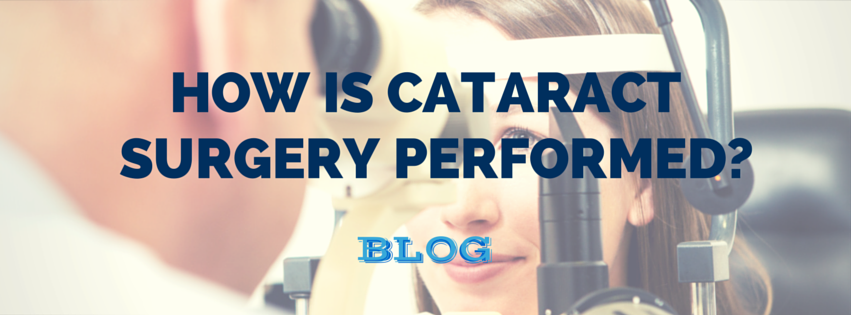According to the Center for Disease Control, there are over 20 million Americans ages 40 and older that are affected by cataracts. If you’re over 75-years-old, odds are at least 50% that you’ll end up with cataracts. The good news is that cataract surgery is one of the safest and most effective surgical procedures preformed. There are over 3 million cataract surgeries preformed every year in the U.S, nearly all of them highly successful.
Here at Scottsdale Eye Physicians & Surgeons, we have over 37 years of experience in cataract surgery. We also have one of only a handful of ophthalmologist in Phoenix performing both femtosecond laser surgery for cataracts and using the OptiPlus ORA to refine the implant lens measurement and positioning.
Types of Cataract Surgery
There are many types of surgical methods to remove cataracts. Your Scottsdale surgeon will determine which option is best for your cataract condition.
Phacoemulsification: This form of cataract surgery is one of the safest performed operations around the globe. The surgeon will create a small incision in the cornea, followed by the break up of the cataract into small segments for removal. The cataract fragments are removed with a vacuum and a replacement lens is inserted.
This is the most common form of cataract surgery and can often be performed in less than 20 minutes with topical anesthetic drops and minimal sedation.
Extracapsular: This type of cataract surgery is rarely used nowadays. It does require a larger incision so that the cataract can be removed in one piece. This option does require sutures to close the incision, and recovery will be slower then with phacoemulsification.
Intracapsular: This surgical technique for the removal of cataracts is almost never used anymore because of an increased risk for complications and the need to use a less advanced implant lens. Intracapsular cataract surgery removes the lens and the entire membrane around the lens. Essentially the entire lens of the eye is removed, requiring a large incision and multiple sutures.
Femtosecond Laser for Cataract Surgery
Femtosecond laser surgery was approved by the FDA about 2011 , replacing several aspects of manual cataract surgery. Femtosecond laser surgery is safer, more precise and faster then manual cataract surgery.
With this laser approach, your Scottsdale eye surgeon will create a precise surgical plan and a 3D image of the eye, allowing them to make the incision more accurately in a specific location, at a specific depth and specific length. The femtosecond laser can often treat astigmatism during the procedure.
OptiPlus ORA
As technology has advanced, cataract surgery techniques and options have progressed to an amazing degree. With OptiPlus ORA, your Scottsdale eye surgeon can evaluate and assess your vision during the cataract surgery.
OptiPlus ORA works by directing a beam of low intensity laser light into the eye, which reflects off the retina and measures the eye’s optical characteristics, giving the surgeon an exact measurement of the eye. Immediately after the cataract has been removed, your surgeon can take a measurement of your eye, allowing him to make precise surgical decisions regarding which implant lens is best to use.
While there are multiple surgical techniques for removing cataracts, you’ll want to sit down with William R. Kilpatrick, MD or Dennis L. Kilpatrick, MD to determine which route will be best for your situation. Call to make an appointment today.

